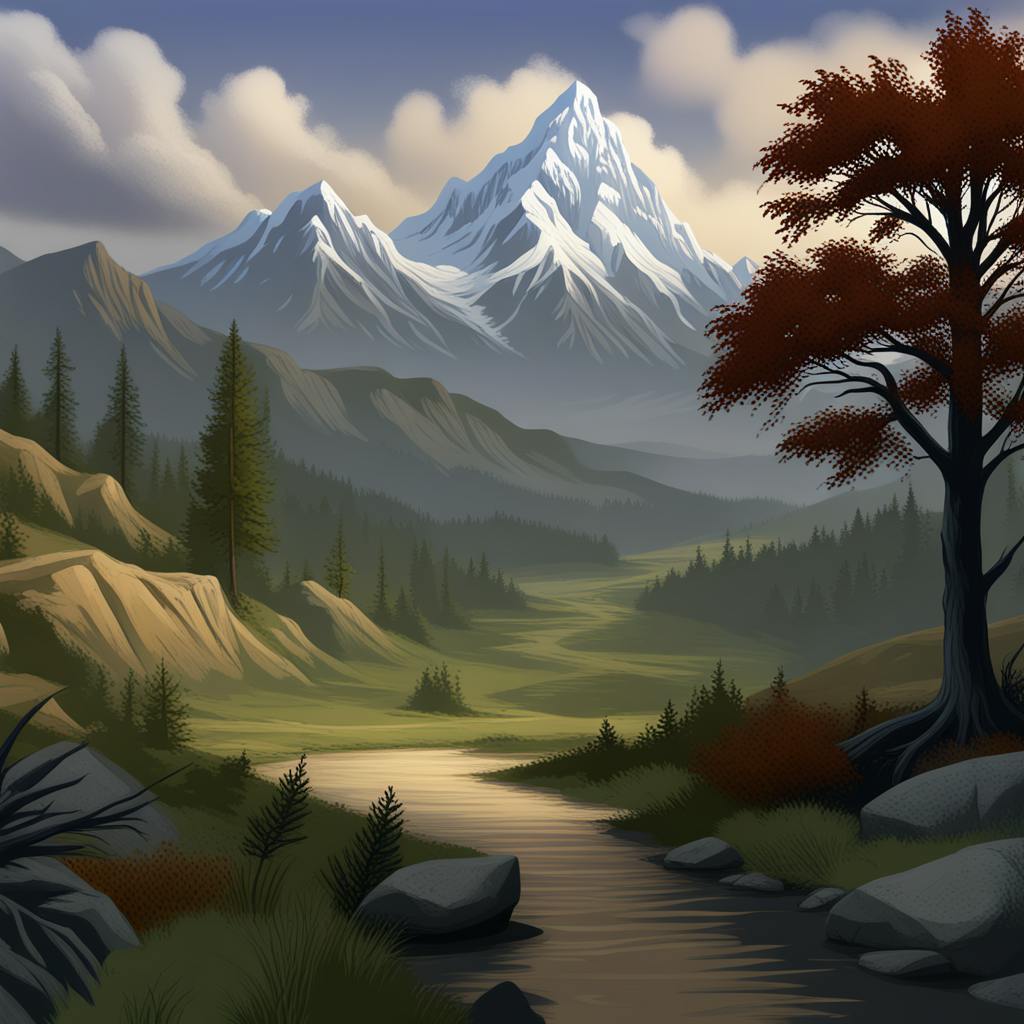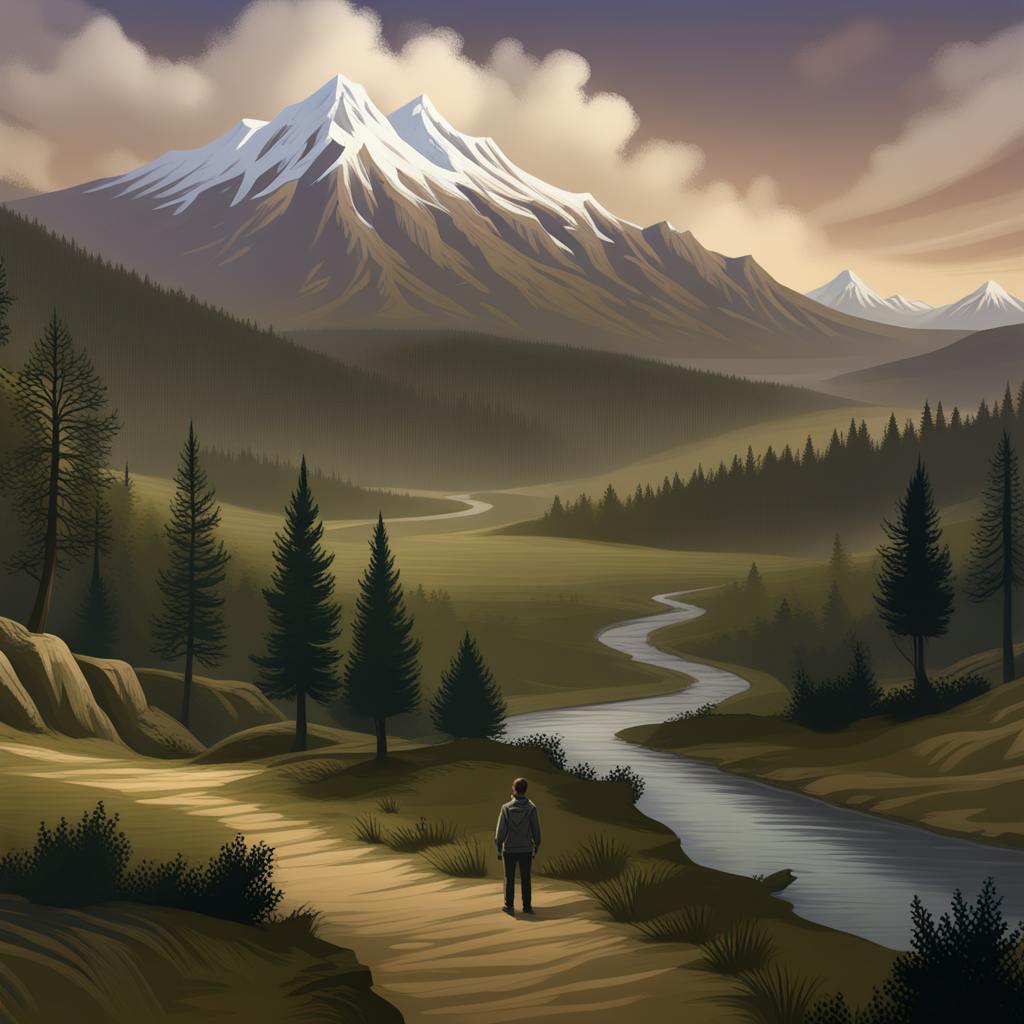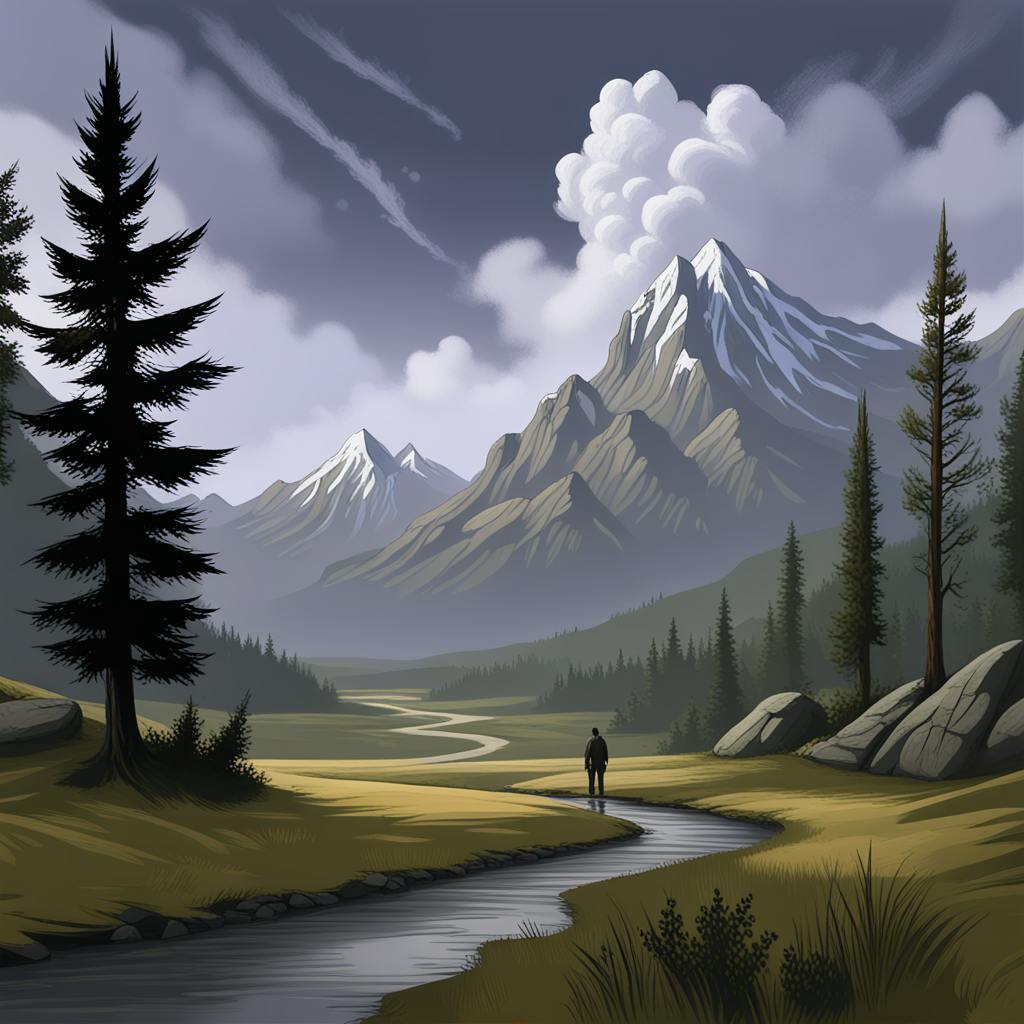Art is a powerful and exciting way people express their creativity. It shows how big human imagination is and how society keeps changing. Art can reflect real life and also give us new ways to see the world. There are endless styles and forms, from classic paintings to modern digital art and even new methods using artificial intelligence. Learning about these types of art helps people understand and enjoy creativity more, whether they’re just starting out or already love art.
Delving into Traditional Art Styles
Traditional art forms the bedrock upon which countless other styles have been developed. Revered and enduring, it encompasses styles such as realism, impressionism, and abstract expressionism, each offering a unique lens through which to view the world.
Realism: Capturing the Tangible World
Realism is an art style that focuses on showing things as they really look, with careful detail and accuracy. It started in the mid-1800s as a reaction to romantic art, which often made things look better than they were. Artists like Johannes Vermeer showed this style by paying close attention to detail and how light works, making their art look very real. Realism still plays a big role in modern art today, especially in photography and super detailed sculptures.
Impressionism: The Dance of Light and Color
Unlike realism, impressionism focuses more on the quick effects of light and color instead of fine details. It began in the late 1800s with artists like Claude Monet, who used loose brushstrokes and bright colors to show what a moment felt like. These artists often painted outside to better see how natural light changed things. Impressionism was a bold new way to create art and helped shape modern styles that highlight personal feelings and how people see the world.
Abstract Expressionism: Emotion over Representation
Abstract expressionism started in the United States after World War II, as artists looked for new ways to show deep emotions and ideas. Instead of focusing on realistic images, artists like Jackson Pollock and Mark Rothko used abstract shapes, bold colors, and unusual methods to express feelings. Their art encouraged people to connect emotionally rather than try to find a clear meaning. This movement was important in making New York City a major center for modern art.
Romanticism and Cubism: Diverse Narratives
Romanticism and cubism are two important traditional art styles with very different looks and meanings. Romanticism, popular in the late 1700s and early 1800s, focused on strong emotions, personal expression, and the beauty of nature. Artists like Caspar David Friedrich and Eugène Delacroix created powerful scenes that made people feel deeply and think deeply. Cubism, on the other hand, started in the early 1900s with artists like Pablo Picasso and Georges Braque. They broke down subjects into shapes and showed them from many angles at once. This fresh style changed how people thought about art and inspired many new movements.
A Journey into Digital Art Styles
As technology improved, art changed too, leading to digital art. This new form combines creativity with technology, giving artists powerful new tools and endless ways to create.
Pixel Art: A Nostalgic Exploration
Pixel art is a style known for its blocky, pixel-based look that reminds people of old computer graphics and classic video games. Artists build each image one pixel at a time, creating a special visual style that many gamers and artists enjoy. It has become popular again recently, especially in indie games, because it can show big ideas using simple details.
3D Modeling and Digital Painting: Expanding Horizons
3D modeling is a digital art form that creates lifelike objects and environments with depth, making it key in animation, video games, and movies. It lets artists build detailed worlds and characters. Digital painting, in contrast, copies classic styles like watercolor and oil painting but uses digital tools. This gives artists the freedom to try new things and make endless changes without using real paint or canvas. Artists like David Hockney use digital painting to explore new ways of making art and to challenge traditional ideas about it.
Vector Art and Fractal Art: Precision and Complexity
Vector art employs mathematical equations to create crisp, scalable images, making it ideal for graphic design and illustration. Unlike raster images, vector graphics maintain their quality at any size, making them versatile for both print and digital media. Fractal art, meanwhile, delves into the realm of mathematics, using algorithms to generate complex, repeating patterns. These intricate designs reveal the beauty of mathematical precision, offering a visual representation of chaos theory and nature's inherent patterns.

AI made with Jordan Kotzebue
The Intriguing Frontier of AI Art Styles
AI art is an exciting mix of smart computer systems and bold creativity that makes us rethink what it means to create art and who gets credit for it.
Generative Adversarial Networks (GANs) and Neural Style Transfer
Generative Adversarial Networks (GANs) are a big part of AI art. They use machine learning to make new images based on data they’ve learned from. This lets artists create work that feels new but still looks like known styles. Another cool tool is neural style transfer, which lets you take the style of one image and put it on another. For example, you can make a photo of a city look like it was painted with the swirling brushstrokes of Van Gogh’s Starry Night.
Algorithmic and Procedural Art: A New Paradigm
Algorithmic art is made using computer programs, often creating complex and abstract patterns that make us think about what creativity really means. In this style, the artist acts like a programmer, writing code that produces the artwork. Procedural art takes this further by using rules or steps to automatically generate art. This method is common in video games, where it helps build different worlds and characters for each player, making every experience unique.
Automated Portraiture: The Future of Representation
Automated portraiture is a new mix of AI and classic portrait art. It uses algorithms to study faces and expressions, then creates lifelike or abstract images based on that data. This raises interesting questions about identity and how we represent people in art, especially as machines take a bigger role in creating it. Artists and tech experts are using this approach to explore new ideas and rethink what it means to make and experience art today.
Credibility through Frequently Asked Questions
What defines a type of art style?
An art style is a specific way of creating art that includes the method, technique, and tools used to share ideas, emotions, and experiences. Each style has clear features that show the artist’s message, cultural background, and personal view. Learning about these parts helps people better understand and enjoy what makes each style special.
How has digital art changed the landscape of traditional art?
Digital art has changed the art world by giving artists new tools and ways to create that don’t exist in traditional media. It allows for endless creativity and makes it easy to share art with people all over the world. This growth has not only supported traditional art but also pushed its limits, creating a more exciting and connected art scene.
Why is AI art considered revolutionary?
AI art is groundbreaking because it goes beyond what humans alone can do, using machine learning to create completely new kinds of art. It changes how we see the artist’s role and raises big questions about originality, ownership, and what art really is. As AI grows more advanced, it will continue to influence and shape how art is made and experienced in the future.

AI made with Jordan Kotzebue
How can I distinguish between the various types of art?
To distinguish among the different types of art, it's crucial to understand their defining characteristics:
- Medium and Technique: Each art type uses distinct materials and techniques. For instance, painting typically involves pigments on a surface, while sculpture may involve carving or assembling materials.
- Purpose and Intent: Different art forms serve varied purposes, like performance art, which focuses on the live act, compared to traditional paintings aiming for visual aesthetics.
- Historical and Cultural Context: Some art styles are closely tied to historical movements (e.g., Impressionism to the late 19th century) or cultural expressions (e.g., street art reflecting social issues).
- Visual and Experiential Impact: Assess the visual impact (colors, forms) and how the art engages the viewer, whether it's immersive like installation art or visually spectacular like abstract painting.
How does "Exploring the Rich Landscape of Art: Understanding its Diverse Types and Styles" help readers appreciate different art forms?
This comprehensive guide enhances art appreciation by:
- Educational Insights: Offering detailed explanations of each art form, highlighting its historical evolution, cultural significance, and key artists.
- Visual Examples: Providing illustrations and images to showcase diverse styles, aiding in visual literacy and recognition.
- Analytical Framework: Offering frameworks and criteria to critically analyze and appreciate art beyond initial impressions, fostering deeper engagement with artworks.
- Encouraging Personal Exploration: Inviting readers to explore and connect with art that resonates personally, ultimately broadening their artistic horizons.
Conclusion
The world of art is a rich and varied tapestry, woven from the threads of traditional, digital, and AI innovations. Each type offers its own set of styles, techniques, and inspirations, contributing to an ever-expanding landscape of human creativity. Traditional art grounds us with its heritage, digital art propels us into the future with technology, and AI art challenges our understanding of creation. Together, these "types of art" reflect the endless evolution of artistic expression and continue to inspire viewers and creators around the globe.

